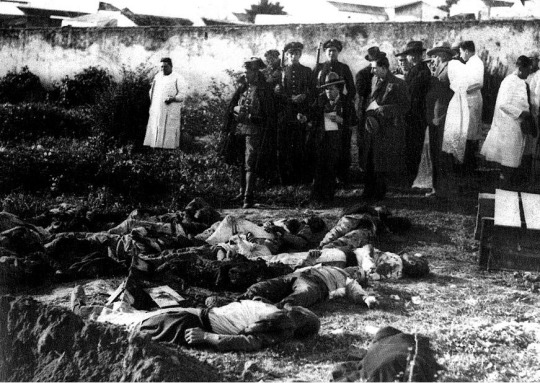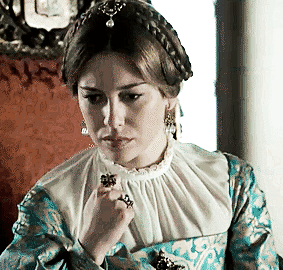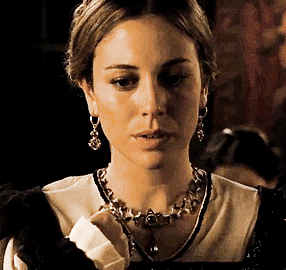#portugal monarchy
Explore tagged Tumblr posts
Text

English School of the 17th century Double portrait of King Charles II (1630-1685) and Catherine of Braganza (1638-1705), ca.1665
#King Charles II#Catherine of Braganza#1600s#english king#english queen#king#queen#english art#england#western civilization#world history#art#fine art#european art#classical art#europe#european#fine arts#oil painting#europa#portugal#monarchy#royal#royalty#noble#nobility#european fashion#fashion
34 notes
·
View notes
Text

Anne of Austria
Artist: Alonso Sánchez Coello (Spanish, 1531–1588)
Title: Ana de Austria, Reina Consorte de España
Genre: Portrait
Date: circa 1571
Medium: Oil on Canvas
Collection: Lázaro Galdiano Museum, Madrid Spain
Anne of Austria ( Cigales , 1 November 1549 - Badajoz , 26 October 1580), was queen consort of Spain and Portugal, as the fourth wife of her uncle, Philip II , and also the mother of King Philip III .
#portrait#oil on canvas#anne of austria#alfonso sanchez coello#spanish painter#queen consort of spain#queen consort of portugal#16th century spain#spanish monarchy
3 notes
·
View notes
Photo

The former Miguel I of Portugal and his wife, Adelaide of Löwenstein-Wertheim-Rosenberg.
#Adelaide of Löwenstein-Wertheim-Rosenberg#miguel i#portugese monarchy#portugal#House of Braganza#long live the queue
25 notes
·
View notes
Text
I need everyone to stop believing, please, that the green in the portuguese flag means HOPE and that the red means THE BLOOD OF THE BRAVE PORTUGUESE. It’s a lie. The flag was designed by three monarchists under a contest that they won against their will. It was supposed to be a mockery. Columbano drew the flag. He never, ever used green or red in his paintings. That’s why it’s red and green. Republicans were the ones to pull the brave and blood shit out of their ass. Everyone involved in the design of the flag didn’t even believe in a republic. Idk why we keep saying this hope and blood shit when this is infinitely funnier
#contests to design a new flag were pretty normal#still are#think about it#if you want to end the monarchy#under the 'power to the people' pretense#you would WANT an open contest for the PEOPLE to design the flag#happened often#it just so happened that#in portugal#it was the monarchists who won
29 notes
·
View notes
Text
Thank god I didn't watch the news today. What an insufferable day for Portugal
#to recap the daughter or granddaughter of the “portuguese heir” to the throne got married#“heir” because there's no heir at all as portugal hasnt been a monarchy for over a hundred years 🤡
4 notes
·
View notes
Text
The Soviet Revolution of October 1934
The Second Spanish Republic is a figure in history which tends to be overly glorified by the contemporary Spanish left, including some excessively folklorist communists, as a desire to look through history for any instance when opposition to the monarchy and reactionaries was the hegemonic position. After 40 years of a fascist dictatorship, and 46 years of a liberal democracy that has exposed social-democracy's bankruptcy, the Second Republic is a time when the PCE (Communist Party of Spain) was a force to be reckoned with, at least compared to today, with a few hundred thousands along its lines. Despite the Second Republic lasting from 1931 to 1936, the aspects that tend to be glorified are the times of the Popular Front, the electoral alliance from the PSOE to the PCE that won the February 1936 elections, and ruled until the coup d'etat of July 1936. Perhaps unconsciously, perhaps consciously, the years of 1932-1935 tend to be not forgotten, but minimized.
This is because the Second Republic was not a "popular" state, it wasn't even nominally progressive for half its history. And again, in an exercise of willful ignorance, when its repressive episodes are discussed, most tend to focus on the Black Biennium, as historiography knows it, the two years (1933-1935) when the right governed under the CEDA coalition, which included falangists, monarchists, even Carlists. But the history of repression in the Second Republic begins not even a month after its constitution was ratified. The Castiblanco incidents of December 1931 saw a few day workers killed by the police during a peaceful demonstration asking for work, afterwards it turned violent and 4 policemen were lynched by the workers. That same week, in the Arnedo incidents, the 5th of January 1932, the police shot into a crowd of striking workers in the town's square, renamed recently to Republic Square. 11 people were killed, two of them a mother and his 4 year old son, another a 70 year old woman. 5 others were permanently left unable to work. Just a year later, in January of 1933, 19 men, 2 women and a child were massacred in the Casas Viejas Incident, after an attempted uprising and occupation of the police quarters.

The Second Republic was always an anti-worker state, from its very beginnings. Regardless of what its constitution said, the social advances of the republic were lubricated with worker's blood.
Let's set some context for the subject of this post: The PCE, section of the Third International, found itself at risk of dissappearence at the end of the 1923-1930 dictatorship. It only really began to recover after José Diaz was elected General Secretary in 1932, it had about 1.000 members at this time, and by 1934 it had risen to 15.000 members, without counting the members of its youth wing. Internationally, the meteoric rise of fascism was unignorable. Nazi-fascism and fascism had seized power in Germany and Italy, and similar tendencies in Portugal and Austria were also in power, in the form of Salazar's Estado Novo in the former and Dollfuß' austrofascism in the latter, himself killed by outright nazi-fascists. Spain had its supposedly progressive Republic, of course, but it did not prevent the JONS to be founded in 1931 and the Falange in 1932, which during the civil war would merge into the infamous FE de las JONS, the Spanish Falange of the National-Syndicalist Offensive Juntas (The Falange is still a legal party now!). The leader of the CEDA, which would later govern during that Black Biennium I mentioned earlier, attended the Nürnberg Congess of 1932, where the pictures of those massive nazi-fascist rallies come from.
The 4th of October, 1934, 3 CEDA ministers had been chosen to enter the government, and in response, a strike, called the Revolutionary General Strike, was called for the following day, the 5th of October, 90 years ago today. The organization of this strike was done between the PCE, CNT (national confederation of workers, an anarcho-syndicalist union) and PSOE. The will to call the strike was not equal, however. The meeting minutes of the evening and night of the 4th show that the CNT was not very convinced of the strike and flip-flopped a lot, while the PSOE only decided to support the strike once it became impossible for them not to. The PCE, on the other hand, had already spent a few months warning of this, and preparing.
Barely a month before October, the police found a shipment of weapons going from the port of Gijón to Mieres, the future epicenter of the revolution. There were three armed shipments, and while the other two reached their destination, the third one being found almost lead to Indalecio Prieto, of the PSOE, being arrested. As a result, the weapon stashes in various places in Madrid (Casa del Pueblo, Ciudad Universitaria, Cuatro Caminos). These weapon stashes were supposed to supply the revolutionary strike in Madrid, and since they were found, the nascent revolutionary center was stillborn, since it was unable to arm itself. These same weapon stashes would later be replenished and used by the first militias of Madrid in the July 1936 coup d'etat
Nevertheless, the call for a strike was distributed at 6:00 of the 5th, but it was only heeded in Asturias, Madrid, Vizcaya, Cataluña, plus a few weak points (Cantabria, Aragón, Alicante, León, Palencia, Málaga). The reason the call was not heeded in broader parts of the country was because the agricultural day workers, predominant throughout the central meseta and south had already carried out their own strike that same year. They were recovering, they feared the repression that was still fresh in their minds, and it did not help that the predominant political organization among them, the CNT, took too long to support the strike, they simply were not prepared. It is impossible to understate how crucial this point is. The greatest worker strata in Spain were unable to be reached by the call to a revolutionary strike, for reasons related to the situation, but because of the inability of the PCE of this time to truly penetrate the social majority.
At any rate, the Revolutionary General Strike was not ignored everywhere, from these days comes this picture of Madrid's very center devoid of people, withholding their work, but impotent to do anything more:

The Second Republic did not hesitate to stifle this strike, using planes and naval and land artillery. Once again, Spanish capital required trails of this country's reddest blood to line the streets, not shying away from employing the help of fascists such as the up-and-coming General Franco, sent to repress the workers of Asturias, where the strike was incandescent with revolutionary impetus. Before talking about Asturias, I won't ignore the other places where the strike was also popular. In Guipúzcoa and Vizcaya, The Basque Country, repression was just as bloody, executed by the Guardias de Asalto (Assault Guards), killing 40 workers in Vizcaya. There, the "Revolutionary Committee of Vizcaya", led by the UGT, was quickly dissolved. In Cataluña, a Catalan state was quickly declared, lead by the bourgeois Esquerra Republicana de Catalunya (Catalonian Republican Left), but was just as quickly put down with another 40 dead.
Asturias is another story, one that lasted for two weeks. It isn't much, but in those two weeks, the Spanish proletariat came the closest to holding political power, closer than any other time in its history. There, the strike did have a pre-existing entity capable of organizing the strike: the Worker and Peasant Alliance formed the 1st of April of that year, an armed force influenced by UGT, CNT (only present in the Asturias alliance), the Asturian Socialist Federation, and the PCE, whose militants often represented the most advanced elements of these alliances, but simultaneously relatively few. These alliances were heavily inspired by the Soviets, and often talked about the Sovietization of industry and of opposing colonialism. While this is evidence that it really was an attempted revolution, and that they were inspired by the Bolshevik revolution, their attempt to imitate the USSR's Soviets instead of learning from them was one of the many factors that provoked its defeat. Despite the name, the Worker and Peasant alliances were never as strong among peasants, not a lot of effort was put into it.
Another organization that was relevant during the October Revolutionary Strike were the Workers and Peasant's Antifascist Militias (MAOC in Spanish), a paramilitary militia, founded by Antonio Modesto, a member of the PCE educated in the USSR, he'd later become famous within the republican side of the Civil war. These militias were few but competent, they counted 150 members in Madrid and Asturias each, and while the Asturias militias participated in the revolution, the ones in Madrid sabotaged the roads and railways leading north, to avoid reinforcements getting to Asturias. These militias would later be the base from which the Fifth Regiment was created, in July 1936, to commence the defense of Madrid from the coup d'etat and fascist assault.
In Asturias itself, the proletariat lunged forwards as fast as it could, growing from the town of Mieres and the Nalón basin, to every other mining basin, taking the cities of Oviedo and Gijón by force. The National Guard's many stations were occupied and raided for arms and ammunition, they already had access to explosives from mining equipment. At one point, they felt strong enough to consider a march on Madrid, and even proclaimed the Asturian Socialist Republic. In what sometimes was called the Asturian Commune, a reference to the Paris Commune of 1871, production was controlled by workers, protected by a combatant force of up to 30.000 strong. Production in the metallurgical and mining industry was organized through attempts at imitation of the Soviets, as I mentioned. The Asturias branch of the Central Bank of Spain was expropriated as well, substituting money for a system based on coupon-like vouchers. However, the Revolutionary Committee leading the revolution was dissolved and reformed 2 times in those weeks, without counting the third dissolution that came with capitulation, although that committee did begin to plan the region's economy, the short span of time not really being enough to judge its efficiency.
The revolutionaries' retreat only began once the Republican government, as anti-worker as ever, followed the advice of generals Franco and Godet to deploy the Tercios de Regulares and the African Legion, two battle-hardened groups of the military not afraid to be brutal against the workers. While they advanced, for instance, they executed every wounded solider or civilian found in captured hospitals. In Asturias, more than a thousand workers were killed in combat or executed, and in total throughout Spain, the strike concluded with 2.000 dead, 7.000 wounded, and 40.000 imprisoned, for the crime and sin of daring to govern oneself and to end the exploitation of man by man. One of these dead workers stands out among the rest in popular culture nowadays, a member of the PCE's youth wing: Aida de la Fuente. She was only 19 when she joined the revolution in motion, the daughter of the PCE's founder in Oviedo, and she was known to be an exceptionally brave and dedicated communist. The 13th of October, a few hours after being seen distributing leaflets to civilians urging them to join the revolution, she found herself almost alone in Oviedo, trying to hold off the Legion's advance by manning a machine gun, and she managed to do so for a few hours. She was reached nevertheless and when a Legion commander asked her to surrender, she only responded by shooting back. Seconds later she was killed, and later found in a common grave. The counter-revolutionary press attempted to paint her murder as one committed by her own comrades, even claiming rape, but this was disproved by a journalist who risked his own life, and the testimony of the very legionary who executed Asturias' reddest rose.

The Asturias revolution was, for all its merits and promise, a stillborn revolution. The Communist Party did not have effective direction over the mass of proletarians involved in the revolution, let alone the even greater mass who, for one reason or another, did not meet the conditions necessary for attempting to seize power. The strike's organization was insufficient and thwarted in part, and militarily, the objective Indalecio Prieto was tasked with of securing support among the military officials, along with the general inferiority of the Asturian revolutionaries compared with the elite bodies of the military, meant there was no realistic chance of success. The strike was not even fully effective within Asturias, for instance, the livestock peasants known as vaqueiros, of the southwest, did not ever really have their influence. The PSOE militants who did exist in the region got into trucks and left for Oviedo, while a column of revolutionaries from León, the other side of the mountain range, tried to take Cangas del Narcea, the main town of the region, but they were routed by the National Guard.
After the defeat, 121 revolutionaries exiled themselves to the USSR, mostly communists but also accompanied by a handful of anarchists. There, they received education as cadres, who later returned to Spain before and during the civil war, providing invaluable expertise. Others chose to exile in Portugal or France, but both those countries repatriated them to be imprisoned in Spain.
During the negotiations between the Popular Front and the PCE for the 1936 elections, the main requisite they demanded in order to join was the amnisty of these tens of thousands of imprisoned workers, from the October Revolution and from the myriad of episodes of repression during the Black Biennium. To achieve this amnisty, they were also helped by International Red Aid, a political Red Cross founded by the International in 1922. They, along with the PCE, also provided a pension for the families of the many imprisoned. During the civil war, the Red Aid played an important role in the republican side's medical centers.
This episode is often forgotten when talking about the civil war, but it was one of the many reasons fascists were allowed to take power. Spain's risk of sovietization was an internationally recognized risk, so when the opportunity came, Spanish, English, French, and US capital very gladly did everything they could to hamper the Republic
The lesson from the October Revolution of 1934 is clear. Without country-wide preparation, without a proper analysis of your own conditions, and without achieving social alliances, any revolutionary struggle is bound to fail. The lack of support in the much greater agricultural areas, the rushed planning and failed planning everywhere but Asturias, partially, the PCE's still weak influence in most organizations or regions, all of this meant that, whatever the Spanish proletariat learnt in that Revolutionary General Strike, was bound to be written in sweat and blood. The point of commemorating this bittersweet memory is not to dwell on what could have been, nor to recreate the MAOCs. It's to remember that a revolution is always a couple of bad decades away, and that not building consciousness and preparing structures for it will only mean more unnecessarily murdered workers. It's to ensure that, next time red October is around the corner, it will not be premature. The strength of the working class, our class, the social majority, lies not in the number of victories and defeats, but in the very fact of our fight, explicit and implicit. It lies in the fact that, for as long as classes based on exploitation exist, class conflict is unavoidable.
Many political forces nowadays, which one might call opportunist, will try to draw parallels between that autumn of 1934 and today, exhorting "unity of the left". The only unity that's truly revolutionary, the only unity that will not cause the subordination of our class interests to electoral or immediatist growth objectives, is the unity of the entire working class under a single Communist Party. The PSOE, even with its very involved marxist wing, characterized by the likes of Largo Caballero or Indalecio Prieto, only ever concieved of the Revolutionary General Strike as a means to the end of preventing those CEDA ministers from being appointed and in turn, gain more electoral and institutional strength. They also happened to be a relevant force because of their sheer number of members.
96 notes
·
View notes
Text
Trying to imagine the single change that you could make with a time machine that would do the most good for history. I'm thinking maybe "sinking Columbus's ships the moment they lost sight of the Azores."
Now, I don't know if that would actually prevent the age of colonization and all that comes with it (Portugal had already colonized ports around Africa by that point), but it might delay it for a few decades. Certainly, if Columbus just never came back, the Spanish monarchy might presume that his people had starved to death in the middle of the ocean, which is what its advisors suggested would happen. Or they might think that it was just a storm or something, and send someone else (I might need to kill Giovanni Caboto too, who knows); but even if the Europeans eventually got to the New World, whoever was doing the navigating would surely have to be at least *somewhat* less bloodthirsty than Columbus. I doubt that would change anything in the long run, though.
On the other hand, it seems possible that without Aztec gold and silver flooding the European market, maybe Ottoman Turkey wouldn't have gone into decline. Now, I'm not saying that the Ottomans were particularly good either, but were they worse than the Western colonial empires? Eh; debatable. Anyways, I'm going to err on the side of killing Columbus, and I'll let you know what happens.
71 notes
·
View notes
Photo

The Habsburg Empire, 16th-17th centuries
« Atlas historique », Nathan, 1982
by cartesdhistoire
In 1519, Charles Quint found himself virtually the master of Europe. However, instead of viewing his role as a spiritual mission, he felt a deep sense of duty to his lineage. This obligation drove him to perpetuate, and if possible, enhance, what he had inherited for his successors. This principle, deeply ingrained in the tradition of the House of Burgundy, became a cornerstone of Habsburg governance, with each possession managed as if he were the sole monarch of each one.
In 1556, Philippe II inherited the ancient estates of Burgundy, the Spanish Monarchy (including its Italian dependencies), and the Duchy of Milan. Throughout his foreign policy, the sense of dynasty always took precedence: the Dutch were treated more as rebels than heretics; the incorporation of Portugal in 1580 was driven by the defense of succession rights rather than expansionism. Similarly, interventions in the French civil war and the Armada against England in 1588 aimed more at defending the integrity of heritage than pursuing a crusade.
Under Philippe III (1598-1621), signs of decline began to emerge within the Hispanic monarchy. The reign of Philippe IV (1621-1665) was marked by continual unrest, with no respite for a year of peace. Involvement in the Thirty Years War strained the Castilian Treasury, leading to economic crises in the 1630s and subsequent anti-tax revolts. The dissatisfaction of peripheral elites culminated in secessionist revolts in Catalonia and Portugal in 1640, while nobles conspired against the Crown. In Italy, revolts in Naples and Sicily in 1647 further exacerbated the crisis. Amid internal opposition, economic depression, and military setbacks, the Hispanic Monarchy struggled for survival, with only the Portuguese secession achieving success.
106 notes
·
View notes
Note
Yap more about Austria
why am i being enabled
this is a dangerous thing
because allow me to open the subject that it is criminally underwhelming how in the source material little is explored about Austria's relations to the low countries (Netherlands - Luxembourg - Belgium), Portugal, Liechtenstein, Bohemia (later Czechia) and Slovakia, Slovenia, given the extensive reach of the Habsburg reign when they became the running contenders for the imperial throne of Holy Roman emperor
in fact Austria in the series had so much potential to be fleshed out as a dominating force with a lot of connections if Himaruya had delved a little further into the significant role the duchy had been elevated to given how the Habsburg instrumentalised the duchy into their empirical domain, with Vienna as the capital the bigger they expanded
- The low countries before it became Spanish possessions had been another fief in the HRE. The Habsburgs managed to attain it by way of marriage through Maximilian I to Mary of Burgundy, the Burgundian monarchs having held the fief beforehand. The succession of the inheritance was through his heir, Philip, who married into the Spanish monarchy. When the thrones were unified under Charles V's ascension as emperor, son of Philip, grandson of Maximilian, that's how Spain got to enjoy the chunk of Habsburg domains similarly to Austria also having access to Spain's New Worlds posessions.
- Bohemia was prominent in claiming the Austrian duchy to better their chances at aiming for the throne. Not only was Ottokar already with a nomination, he was on good terms with the Austrian nobility. In turn, Austria would've been pretty good friends with lil Bohemia at the time before being forcefully ripped apart because a certain SOMEONE wanted to fuck Ottokar over. Bohemia was later another domain grouped into Habsburg possessions later into their long reign.
- Can I mention that as opposed to how the series depicted Liechtenstein to be by herself up till Switzerland found her, the kingdom was another fief in HRE. And of course when our favourite greedy schemers became the powerhouse ruling the empire, the little kingdom was another of their property and Liechtenstein and Austria maintained a fair, amicable relationship all the way to world war one. The only reason the territory was conceded included financial instability where they literally had no money left to help Liechtenstein out, so this battered single parent Austria had no other choice to send his (step) daughter away for Switzerland to take her in.
- Portugal. Was. An. Ally. During the war of the Spanish succession. Portugal and the Dutch, whilst their aim was to weaken the Spanish empire and chip away at their new world possessions, it was a mutual agreement between their coalition and the Austrian Habsburg. Not to mention during the joint-empire situation, Austrian monarchs married into Portuegese line to, some semblance of interaction would've made sense to portray these elements of how ridiculously LARGE the circle of network the Habsburg created.
- Don't get me started on Belgium.
- Did you know she spent some period of time in Habsburg Austria household before gaining independence? Part of the concessions following the war of the Spanish succession; prior to this, the Dutch already rebelled and became their own sovereign after detaching from the low countries. It left Belgium and Luxembourg, and they became Austrian-Netherlands when they reaffirmed their hold over this territory in the bunch of treaties that were signed following the war. So to see not a lick of interaction. Even acknowledgement. Not even EITHER of them ever having a moment with each other is so. Speaking of.
- The Belgian king tried to steal imperial treasure from Austria after WWI. Roderich would've given her and the king hell because they tried taking the order of the golden fleece amongst the other things. Have you any idea how hilarious that would be if Himaruya could depict that in the series? Austria would be so composed about it while taking jabs at her like oh remember the little kingdom who thought herself big daring to loot my treasury? Hmm?
- There is. So much. SO many potentially interesting, diverse elements to explore and grow aph Austria with. This is such a unique character considering this wealthy source of historical significance that played a huge part of reigning the longest and shifting the power balance throughout the continent not once, not twice, but three times because it all started with the over-eager Habsburg family that originated from Switzerland.
- Austria would've been the greatest conman to ever exist because that's how Habsburgs entered the bloody battle for the throne; convenient forgery and embellishment to legitimise their claim and marriage connections that solidified their backing. This prospect of grand ambitions single handedly shaped the way Roderich is as a person that he was empire first before reuniting with his personhood to the original roots of his Austrian self.
#hws austria#aph austria#roderich edelstein#hws#hetalia#aph#yeah#uh#i'm telling y'all#i have#so many thoughts#about him
26 notes
·
View notes
Text






Katherine of Aragon & Isabel of Portugal
Holy Roman Empress Isabel of Portugal was interested in the case of the repudiation of her aunt the Queen of England, and she was an advocate of her cause. Katherine of Aragon knew that her nephew, Carlos V, was her only chance to defend her case successfully and that is why she wrote him. Since the death of King Fernando II of Aragon in 1516, her nephew had been her paterfamilias, the head of the Spanish Monarchy, and the most powerful monarch in Europe. Katherine played an active role as ambassadress in the Tudor court, and she was one of his biggest European supporters. Seven months after Katherine’s plead, Carlos sent a letter to his wife Isabel in Spain who was acting as his Governor during his absence. He entrusted her with a mission, to find evidence and witnesses that could help their aunt in her cause to defend her marriage.

The Empress rejoiced that her husband Carlos V was so determined to defend the right of Queen Katherine, which, indeed, it were his duty to do; not only because she was his aunt but also because the case closely concerns the Christian religion itself. Isabel sent several orders to different parts of the Iberian Peninsula to gather evidence. The first was directed to the officers in the Chancillería in Aragon to look for any legal documents related to the marriage negotiations. Another order was sent to elaborate a list of people who were still alive and who had been witnesses in the negotiations concerning Katherine’s marriages. A second group of people were those who had accompanied Katherine to England in 1501. The third order included a questionnaire for these people that directly addressed Katherine’s virginity.
Katherine herself had written to her a full account of the case, of which copies were made to be sent to the Universities of Castile, Aragon, Valencia and Catalonia, with the orders of the Empress that the Universities are to study the case very carefully and send their opinions to her. Originals of the same shall be sent to the Emperor, and copies to Micer Mai in Rome.
In May 1531 a letter was rediscovered in Spain, written by Katherine’s father Fernando to his ambassador in Rome, Francisco de Rojas, which appeared to change everything. Katherine must have been excited to hear that it confirmed that Arthur had not consummated the marriage but that Rojas was to apply for a dispensation anyway in order to satisfy the English.

Empress Isabel was in contact with her ambassadors in Rome, France and London. Dr Pedro Ortiz, an expert in law and Lecturer at the University of Salamanca designated to defend Katherine’s case in the papal court, wrote to the Empress urging her to collect Katherine's letters as the future relics of a holy martyr. In another letter, Ortiz implored the Empress to pray for Katherine and Mary. He believed that they are in great danger.
The death of Katherine of Aragon on 7 January 1536 at Kimbolton Castle, was really sad for the Spanish Royal family. Carlos V was in Naples. By February 1, the Emperor wrote to his wife, who was acting as his regent in Spain, saying that he had heard of Katherine’s death “five or six days” previously. He told her that he and his court had donned mourning and that suitable obsequies had been performed.
Five or six days ago the news of the demise of her most Serene Highness the queen of England arrived, which I felt deeply, as you may imagine. May God receive her in Paradise, which she certainty deserved on account of her extreme goodness and virtue, and the excellent life she led. About her last illness and death the accounts differ. Some say that it was produced by a painful affection of the stomach, which lasted upwards of 10 or 12 days; others that the distemper broke out all of a sudden after taking some draft, and there is a suspicion that there was in it that which in similar cases is administered. I do not choose to make such an affirmation, nor do I wish to have it repeated as coming from me, but nothing can prevent people from judging and commenting upon the event according to their own feelings. Of the Princess, my cousin, I hear only that she is inconsolable at the loss she has sustained, especially when she thinks of her father’s past behaviour towards herself, and of the little favor she can expect for the future. I trust, however, that God will have pity on her, and will not permit the great injustice which has been shewn her to remain with- out some reparation. I have put on mourning, and ordered all the grandees around me, the high officers of this household, as well as the gentlemen of my chamber and table, to do the same, and I myself intend wearing it until I go to Rome. The exequies have been performed here as is customary in such cases; there, where you are, the same ought to be done, as this is but fitting.
Isabel felt Katherine’s death and she was surprised “by what is said of her death”, the rumors about a possible poisoning of her aunt. The Empress also received a letter from Dr Ortiz, enclosing a copy of one from ‘that glorious martyr’ Katherine herself ‘by which the Empress will see the perfection and heroic virtues to which she attained’. Katherine would be a ‘true patroness and advocate of the Empress in Heaven’.
Sources:
Amy Licence, Catherine of Aragon: An Intimate Life of Henry VIII's True Wife
Emma Luisa Cahill Marrón, Article: “Royal Sexualized Bodies at the Tudor Court” : Questioning an Honest Queen: The Scrutiny Around Queen Catherine of Aragon's Virginity
Julia Fox, Sister Queens: The Noble and Tragic Lives of Katherine of Aragon and Juana, Queen of Castile
#catherine of aragon#katherine of aragon#catalina de aragon#isabella of portugal#isabel de portugal#english history#spanish history#women in history
37 notes
·
View notes
Text


MEN THINK ABOUT ROMAN EMPIRE. WOMEN THINK ABOUT HOLY ROMAN EMPIRE
JUDITH OF BAVARIA (797-843) — Daughter of Count Welf I of Bavaria, Judith was a Carolingian Empress as the second wife of Louis I the Pious. Mother of Gisela and Charles the Bald, she foght for both her own influence at court and for the succession of her son over the claims of his elder half-brothers, the sons of Louis I from his first marriage. Charles became the Emperor in 875, after the death of Louis II, his nephew and a son of his half-brother Lothair / fancast: Annabel Scholey
MARIA OF AUSTRIA (1528-1603) — Daughter of Charles V, Holy Roman Emperor, and Isabella of Portugal. She served as Regent of Spain both jointly with her husband, Maximilian (before their accession to the imperial throne), and in person, for her father, and brother, Philip II. Her children include two Holy Roman Emperors, Rudolf II and Matthias, over whom she held great influence, and queens consorts of Spain, and France / fancast: Olivia Cooke
EMPRESS MAUD (1102-1167) — Daughter of Henry I of England and Matilda of Scotland. Her first marriage to the Holy Roman Emperor, Henry V, gave her the title under which she came down into history, and was a source of great pride to Maud. Rightful heiress of Henry I, she confronted her cousin, King Stephen, in the civil war, known as the Anarchy, fighting ferociously for her rights. She failed in this for herself but won for her son Henry, who became king and established the Plantagenet dynasty in England / cast: Alison Pill in The Pillars of the Earth (2010)
MARIA THERESA (1717-1780) — She succeded her father Charles VI as the ruler of Habsburg monarchy in 1740, and devoutedly defended it against its enemies in the War of Austrian Succession and the Seven Year's War. Wife of the Holy Roman Emperor, Francis I, she was a forceful personality and a competent ruler herself, reigning first in her own right, and later, jointly with her son Empreror Joseph II. Her children include two Holy Romam Emperors (Joseph II and Leopold II), queens consorts of Naples ans Sicily, and France / cast: Marie-Luise Stockinger in Maria Theresia (2017)
#historyedit#judith of bavaria#maria of austria#empress maud#empress matilda#maria theresa#maria theresia#perioddramaedit#history#women in history#perioddramasource#onlyperioddramas#tusereliza#userbennet#usermina#weloveperioddrama#cortegiania#perioddramagif#gifshistorical#my edit#*i have literally zero idea what is this lmao* but i really like it idk
141 notes
·
View notes
Text

Infanta Maria Francisca of Portugal
Artist: Vicente López Portaña (Spanish, 1772–1850)
Español: Retrato de la infanta María Francisca de Portugal (1800-1834), esposa del infante Carlos María Isidro de España e hija del rey Juan VI de Portugal y de Carlota Joaquina de España.
Genre: Portrait
Date: circa 1823
Medium: Oil on Canvas
Collection: Royal Academy of Fine Arts of San Fernando, Madrid, Spain
Biography
Maria was born in Queluz, Portugal. On 22 September 1816 in Madrid, she married her uncle Infante Carlos Maria Isidro of Spain, "Count of Molina".
In 1833, Maria Francisca, her husband and children were exiled from Spain because they refused to recognize Isabella II as heiress to the Spanish throne. They went first to Portugal and then to Alverstoke in Hampshire, England. While in Hampshire, Maria became ill and died on 4 September 1834.
A crowd of several thousand was known to have visited the village to pay their respects as her body lay at the rectory of St Mary's Gosport, where her funeral was held and a marble stone honours her memory. Although initially interred in St Mary's Catholic Church Gosport, Maria Francisca's remains were later transferred to Trieste Cathedral in Italy, where the Carlist pretenders and their wives are buried.
Four years after her death, Carlos married Maria Francisca's own sister, Maria Teresa, Princess of Beira.
#portrait#portugal#spain#19th century painting#19th century portugal#vicente lopez portana#spanish painter#spanish culture#spanish monarchy#woman#custome#crown#jewelry
1 note
·
View note
Text
Parallels between D. Pedro I of Portugal, "The Cruel" and Rhaenyra Targaryen "The Cruel".

As we know... Rhaenyra Targaryen, a character from George R.R. Martin's "A Song of Ice and Fire" series, and D. Pedro I of Portugal, a historical figure, share some parallels which i find extremely interesting!
Loss of their loved ones :
Rhaenyra Targaryen and D. Pedro I of Portugal experienced heart-wrenching losses that led to civil wars against their own family.
Rhaenyra Targaryen : Rhaenyra lost her son, Prince Lucerys Velaryon, by her half-brother Aegon II's supporters. These tragedie fueled Rhaenyra's determination to claim the Iron Throne, leading to the devastating civil war known as the Dance of the Dragons, where she fought against her half-brother and his supporters for control of the Seven Kingdoms. D. Pedro I of Portugal : Pedro's love for his mistress, Inês de Castro, led to a tragic turn of events. His father, King Afonso IV of Portugal, disapproved of Pedro's relationship with Inês and ordered her assassination in 1355. This brutal act led Pedro to rebel against his father, sparking a civil war known as the Crisis of 1383–1385. Pedro sought vengeance for Inês's murder and contested his father's authority, ultimately leading to the overthrow of the Portuguese monarchy and the establishment of Pedro as King D. Pedro I of Portugal. Both Rhaenyra and D. Pedro I's civil wars were deeply personal, fueled by love, loss, and a desire for justice or vengeance against their own family members. These conflicts underscored the complexities of power struggles within ruling families and the lengths individuals would go to in order to protect their loved ones and assert their rightful claims.
Struggles for Succession :
Both Rhaenyra and D. Pedro I faced challenges regarding succession.
Rhaenyra Targaryen : she fought to claim the Iron Throne of Westeros, facing opposition from her half-brother, Aegon II.
D. Pedro I of Portugal : was involved in a struggle for succession in Portugal, particularly against his father, King D. João VI, and his father's supporters.
Family Conflicts :
Both figures were embroiled in familial conflicts.
Rhaenyra Targaryen : Rhaenyra's claim to the throne sparked a civil war known as the Dance of the Dragons, pitting different branches of House Targaryen against each other.
D. Pedro I of Portugal : Pedro faced tensions within his own family, including conflicts with his father, as well as disputes with his wife, Infanta Carlota Joaquina.
Assertive Actions :
Rhaenyra and D. Pedro I both took assertive actions to secure their positions.
Rhaenyra Targaryen : Rhaenyra actively sought allies and military support to strengthen her claim to the throne.
D. Pedro I of Portugal : D. Pedro I engaged in strategic maneuvers and military actions to consolidate his power and assert his authority, notably during the Liberal Wars in Portugal.
Controversial Reigns :
Both figures had controversial reigns marked by conflict and instability.
Rhaenyra Targaryen : Rhaenyra's reign as queen was short-lived and tumultuous, characterized by the civil war that erupted over her claim to the throne.
D. Pedro I of Portugal : D. Pedro I's reign in Portugal was also marked by political unrest and conflict, including his involvement in the Liberal Wars and the struggle to establish a stable government.
The title "The Cruel" :
"The Cruel" as been associated with both Rhaenyra Targaryen and D. Pedro I of Portugal, though in different contexts.
Rhaenyra Targaryen : In George R.R. Martin's "A Song of Ice and Fire" series, Rhaenyra Targaryen is sometimes referred to as "Rhaenyra the Cruel." This epithet reflects her actions during the Targaryen civil war known as the Dance of the Dragons, where she displayed ruthlessness and brutality in her pursuit of power.
D. Pedro I of Portugal : Pedro I of Portugal is also known by the epithet "Pedro the Cruel" or "Pedro the Just." This title stems from his actions during the Crisis of 1383–1385, particularly his ruthless pursuit of vengeance for the murder of his beloved Inês de Castro. Pedro's actions during this time, including the execution of political opponents and enemies, earned him a reputation for cruelty among some contemporaries.
While Rhaenyra Targaryen is a fictional character and D. Pedro I of Portugal was a historical figure, their stories share intriguing parallels in terms of their struggles for power, familial conflicts, and controversial reigns.
I found this quite interesting, I hope you found it interesting too. 😁
#asoiaf#a song of ice and fire#a son for a son#rhaenyra targaryen#house targaryen#house of the dragon#hotd#game of thrones#got#daemon targaryen#lucerys velaryon#D.Pedro#Portugal#history
24 notes
·
View notes
Text
Pain: Portuguese 🤝Spanish
Both us and nuestros hermanos


Lmao
#unironically I love nuestros hermanos#we may have our differences but there is no other country I'd rather be neighbors with#portugal#spain#pain#tuga things#pt stuff#The Iberian Republic of Pain#and yes it's a republic#sorry#you're gonna have to give up the monarchy for this to happen#they can still stay as beloved benemerit noblemen like the Duque of Bragança#as long as they're not in a official position as head of state or receiving public funding#they can keep the noble titles too ... just no legal status as rulers
150 notes
·
View notes
Text

Flag of the kingdom of Nyanland!!!
Nyanland Is a fictitious nation situated in the Atlantic ocean. It consists of an archipelago of 17 Islands, the Main one being called Gatso, Nyanland Is known for it's large export of beef, grains, and rice. Nyanland was Discovered by Portugal, when an explorer found a cat-person civilization with advancement reminiscent of that from the classical era. They had quite impressive the monoliths when first found, and even had a festival dedicated to the harvest of oats and rice. They are a Monarchy, led by Phillipe Von Lendraksen I. The former heir, Phillipe Von Lendraksen II, feld after a failed attempt on his life.
13 notes
·
View notes
Text
This is my second run at I Might Be a Fascist. I initially started it as it says i the description because I am a Catholic, a Reactionary and a Monarchist. As I write this, the 2024 elections are less than 2 weeks away. And for those who claim Trump is a threat to Democracy, I say good riddance to it! Democracy only works if every voter is wise and virtuous. And all we have to do is look around to see we are to paraphrase Starset abused by Dunning and Kreuger.
As a Catholic and as an informed human being, I prefer a faithful Catholic monarchy to any pretense at self-governance. Faithful and Catholic being the operative words. Until then, I am as Charles Coulomb put it, "happy to have my snout counted" as long as they are counting snouts.
In my own study of history, I found the "fascist" regimes of Francoist Spain and the Salazar regime of 1930s Portugal to be preferable to the Leftist notions of "freedom" that abound today. But, I am no expert. What I liked was that in each case, as was in many of the other so-called "fascist" regimes were the stated aims to reinstate monarchies where republican governments had driven them out, their manly resistance to communism and their adherence to their Catholic faith.
Yet, I find like everything else I have divergences with some of those so-called "fascists".
Am I a fascist? Well, if that's what they call someone who stands for strong borders, a strong working class, a strong economy and strong faith-centered families, then okay.
5 notes
·
View notes